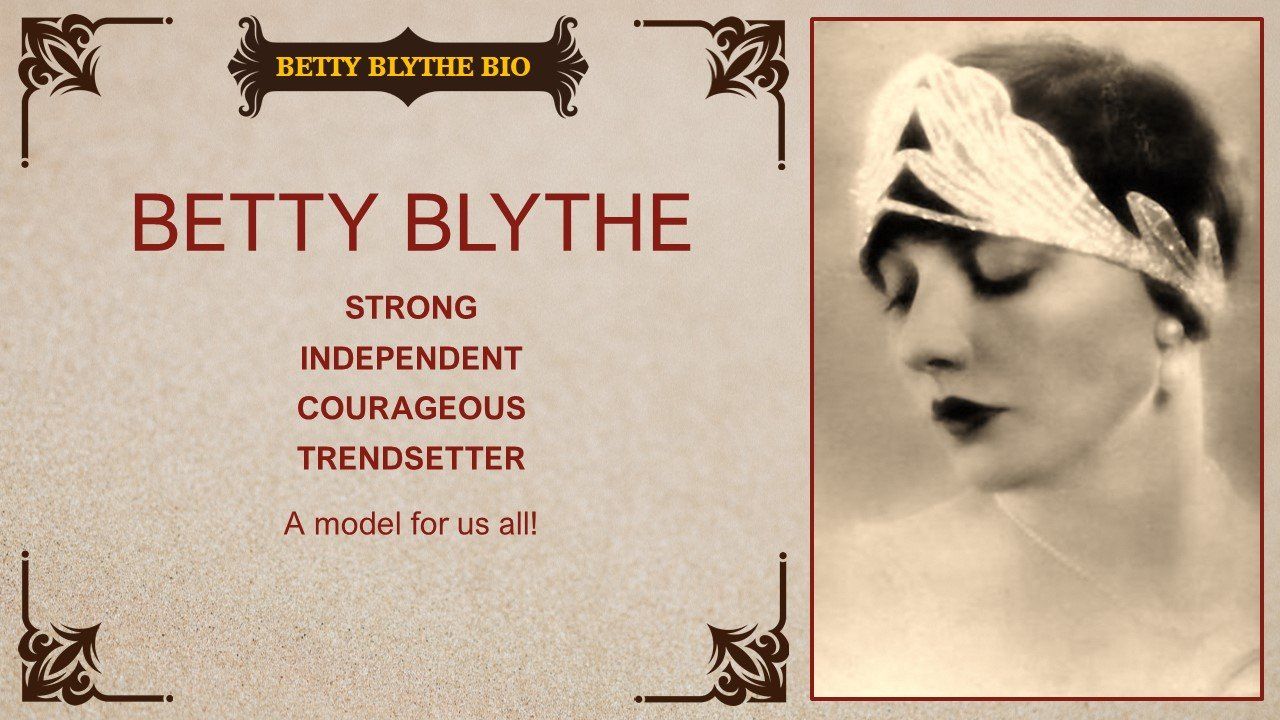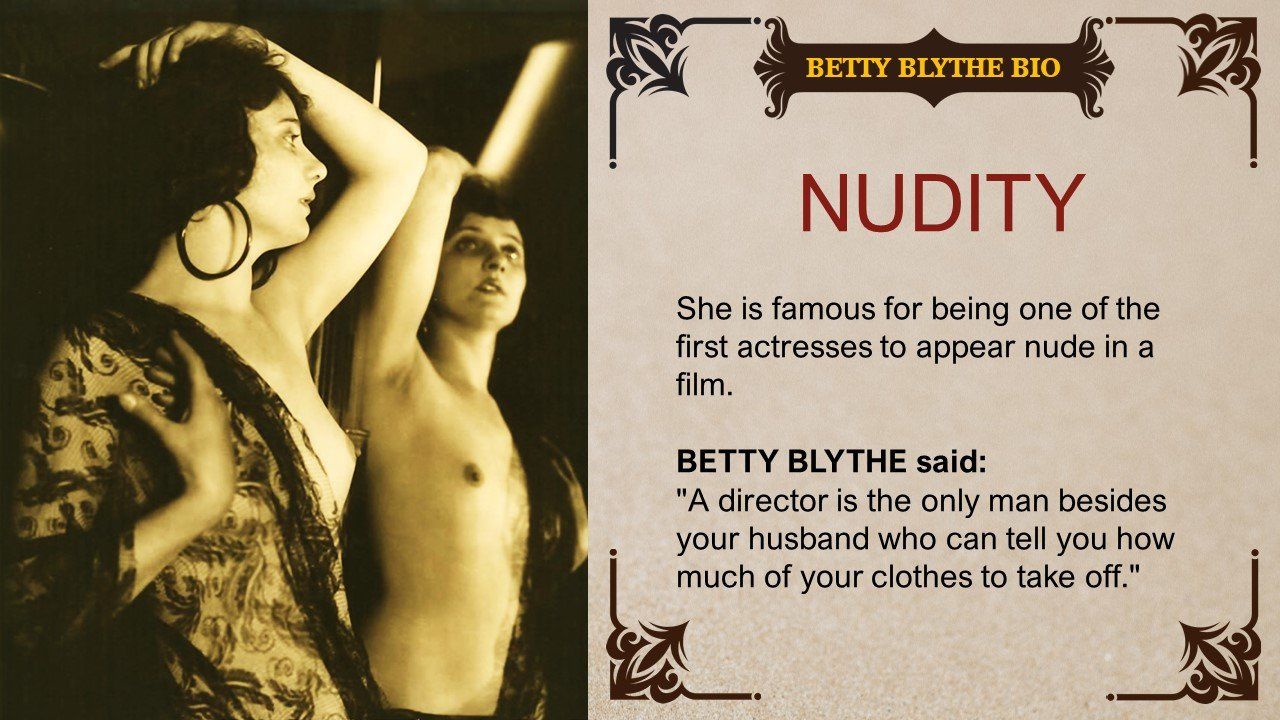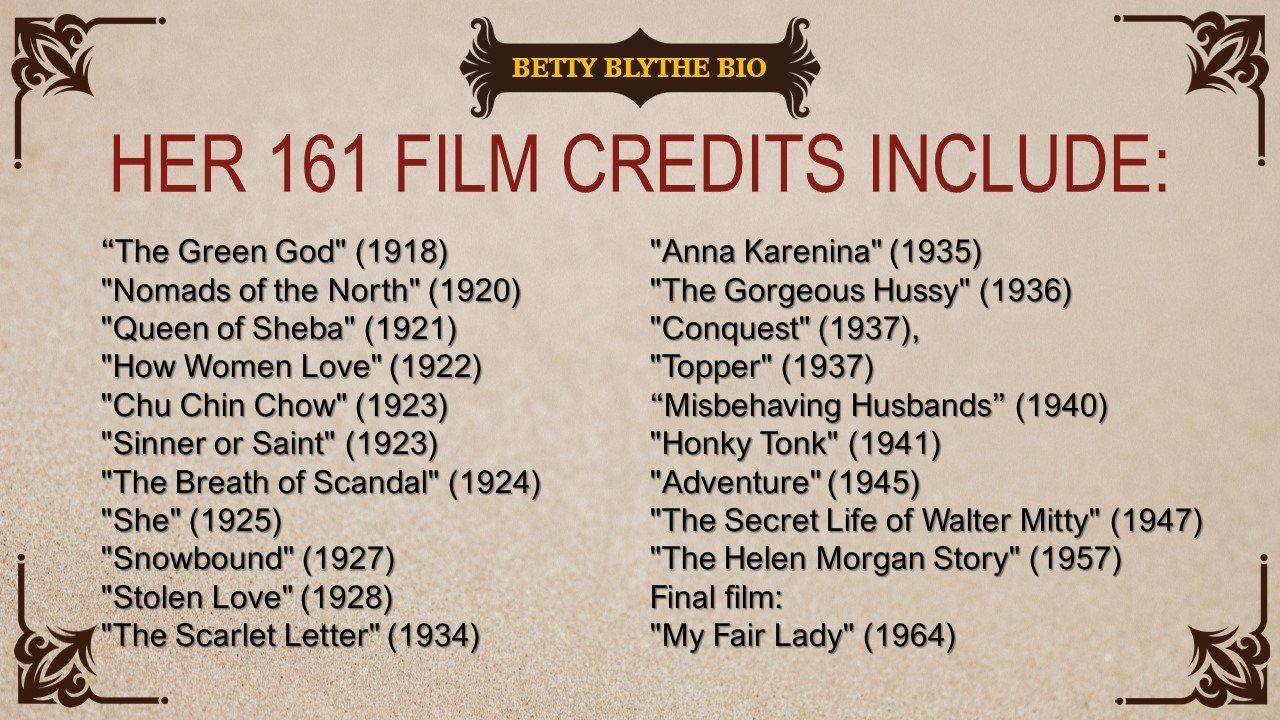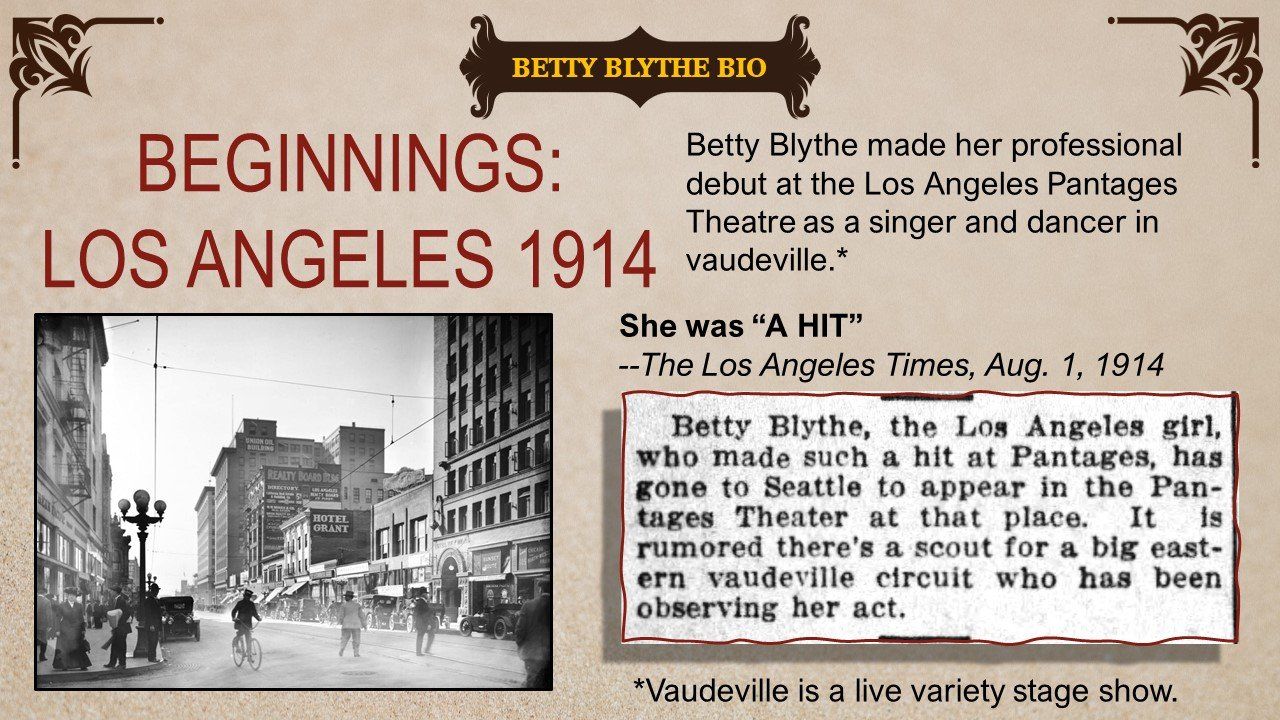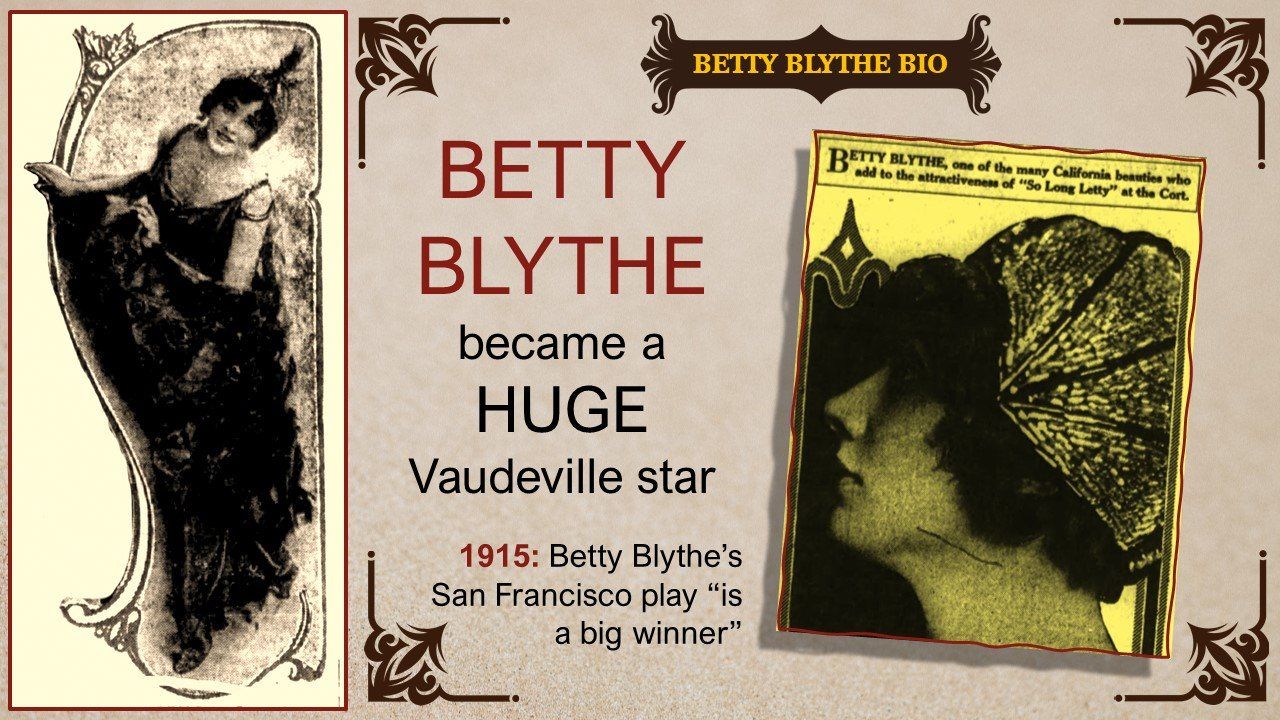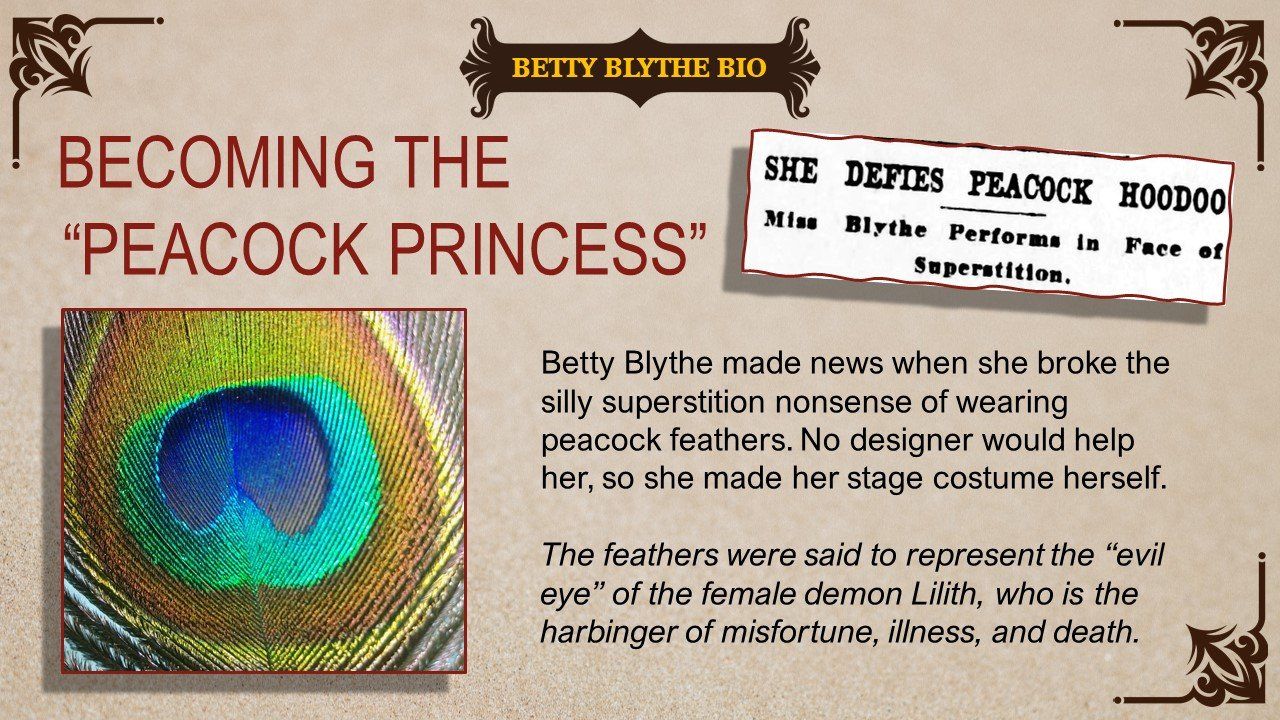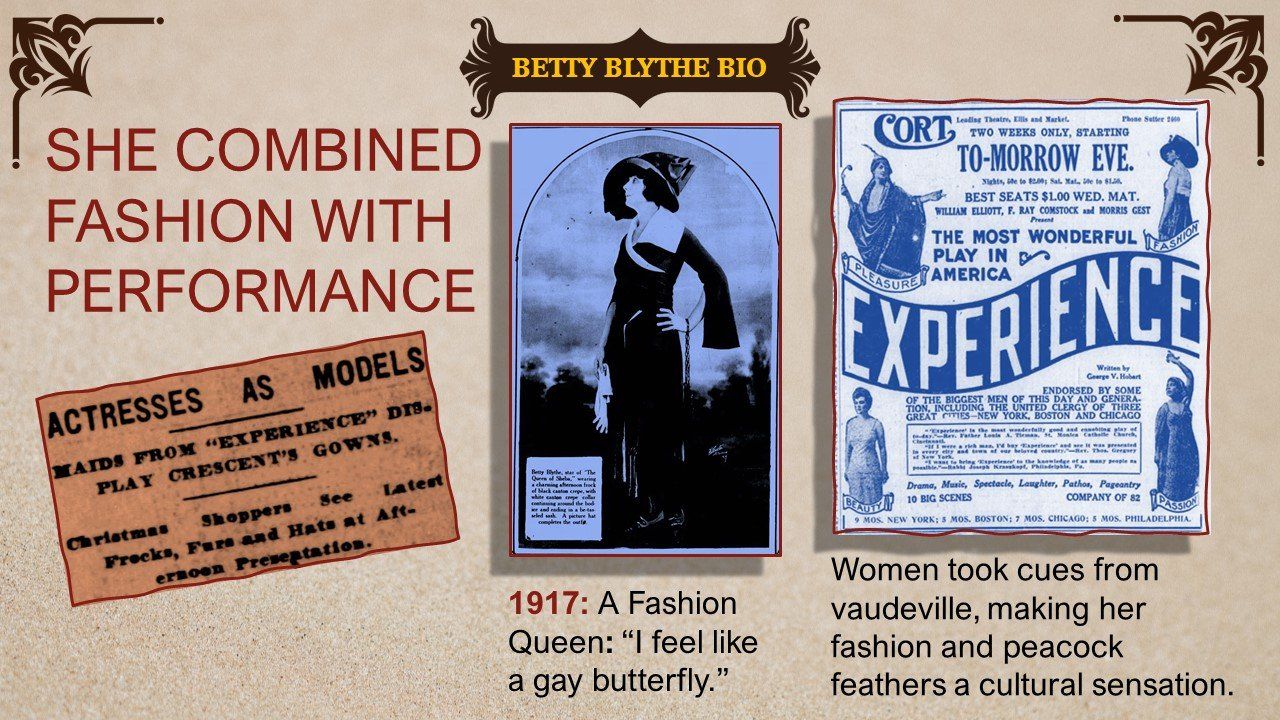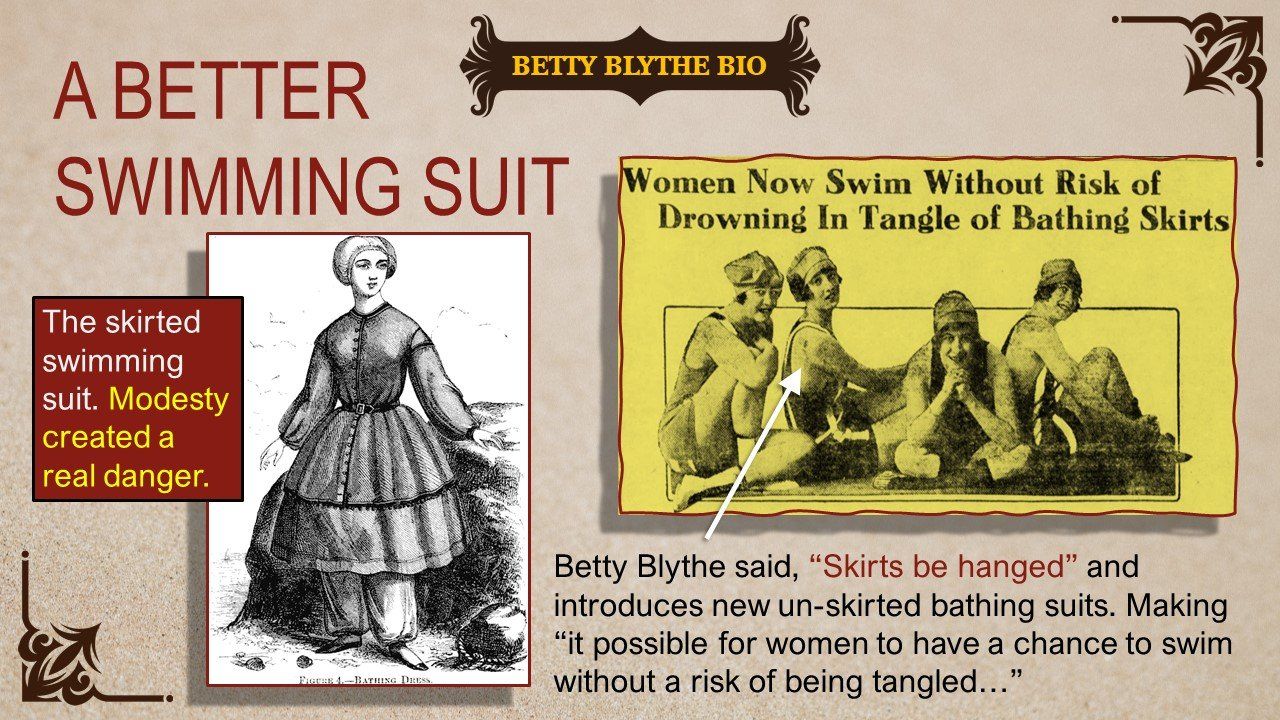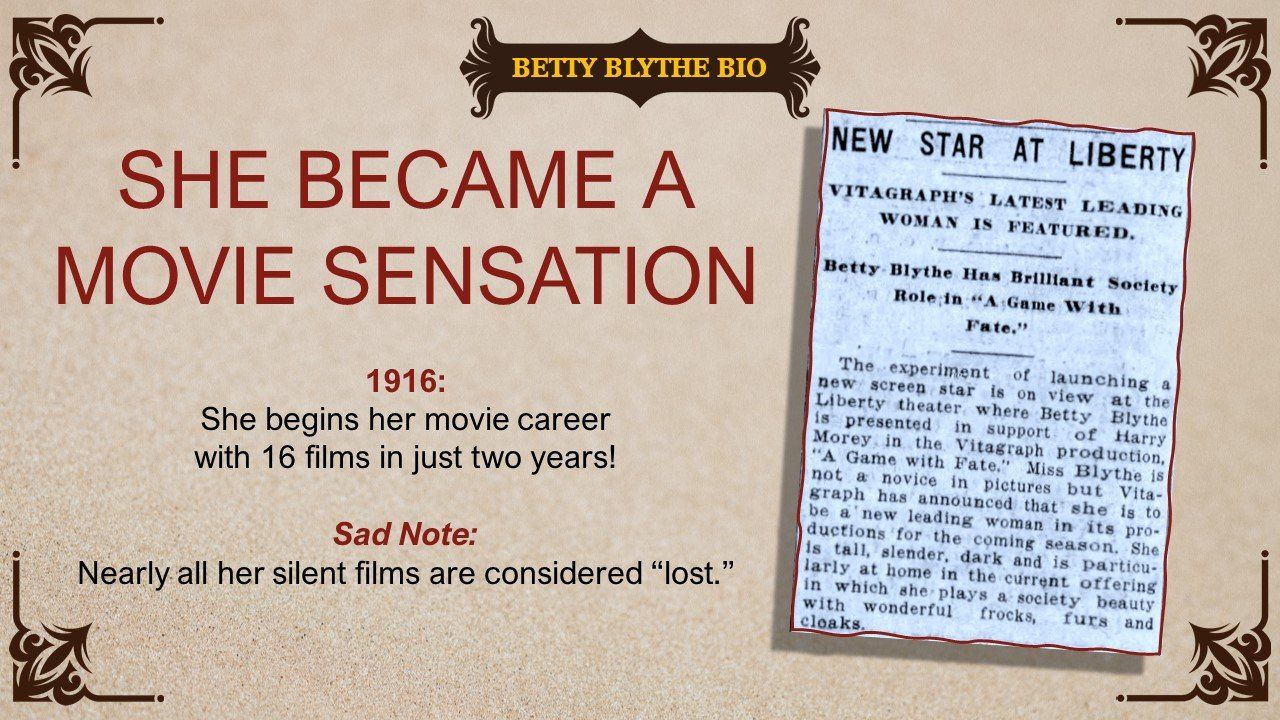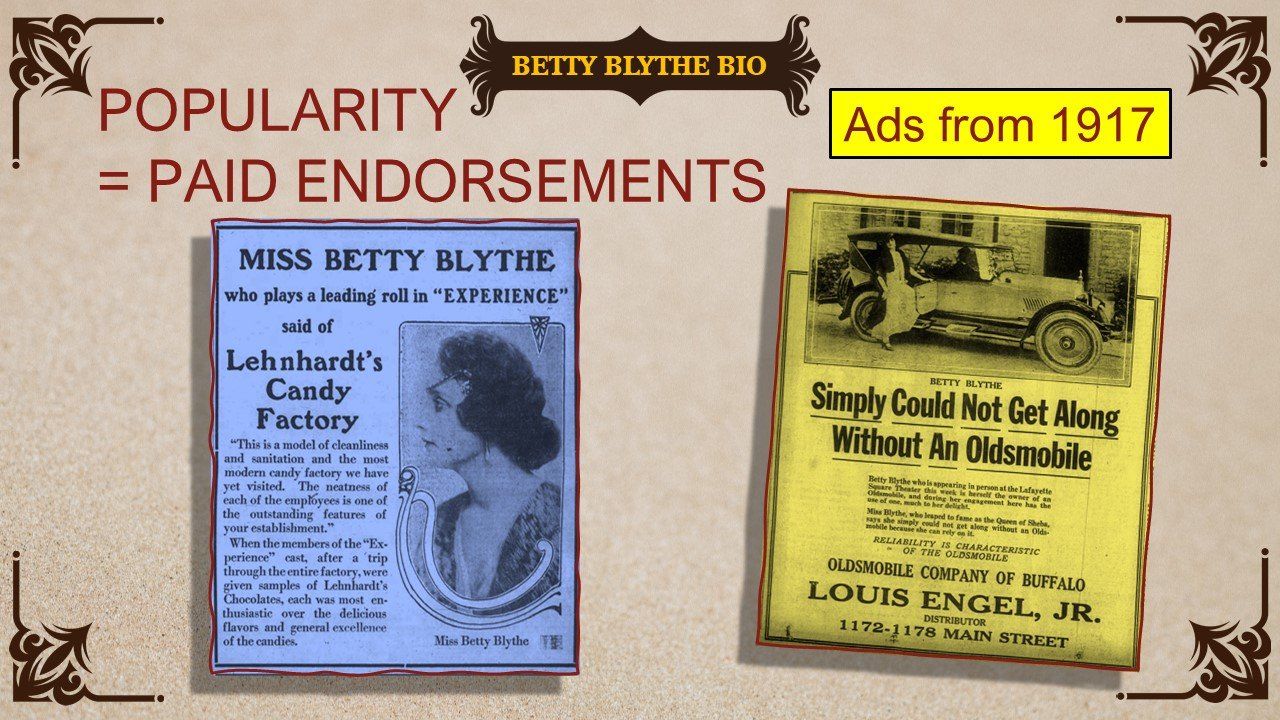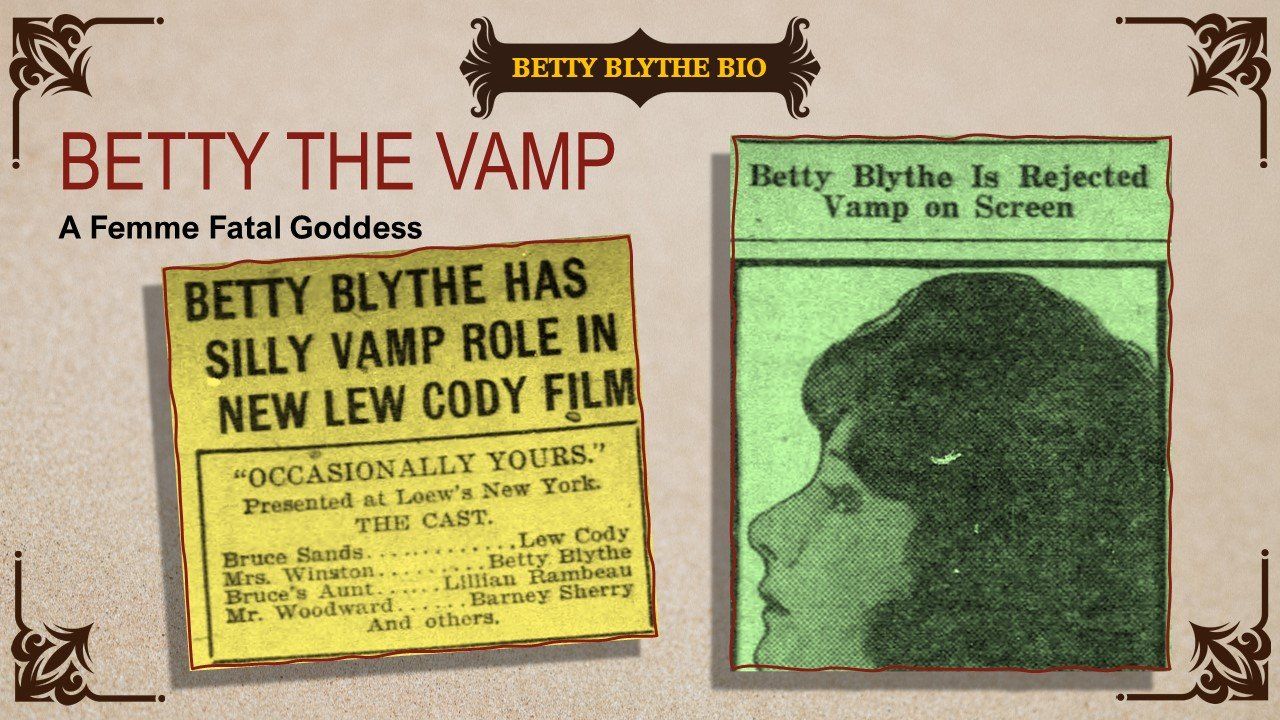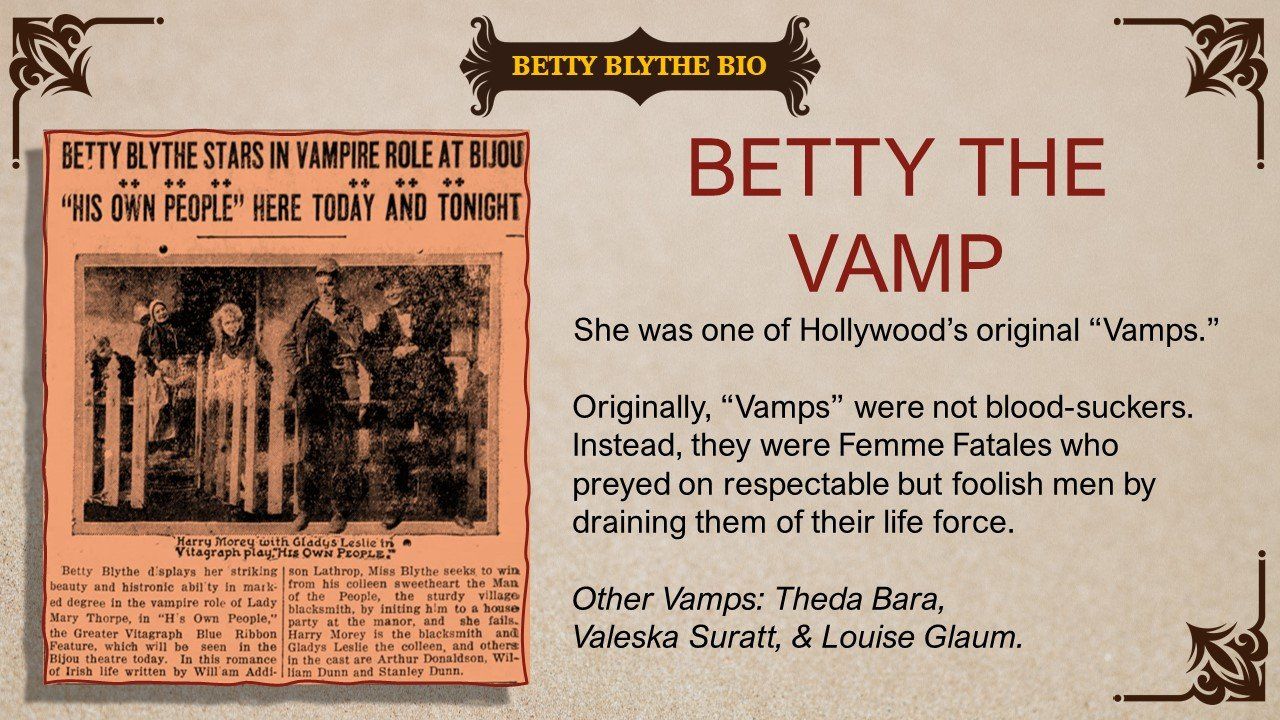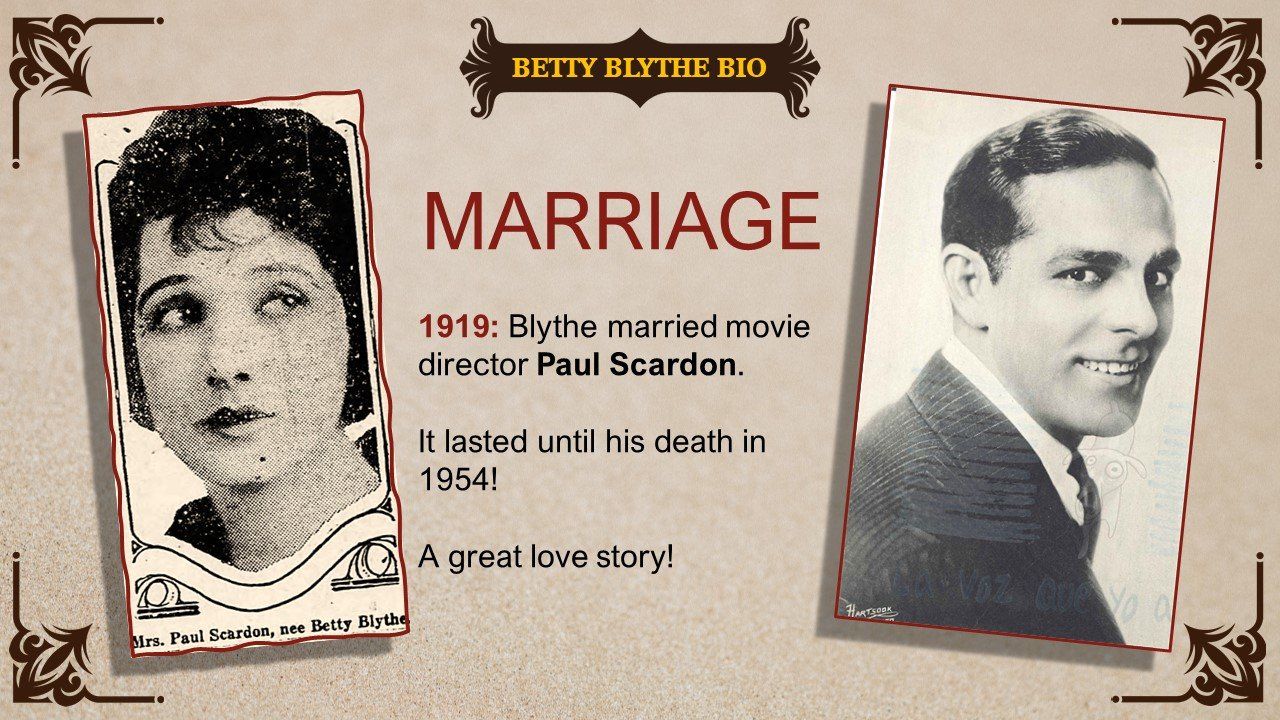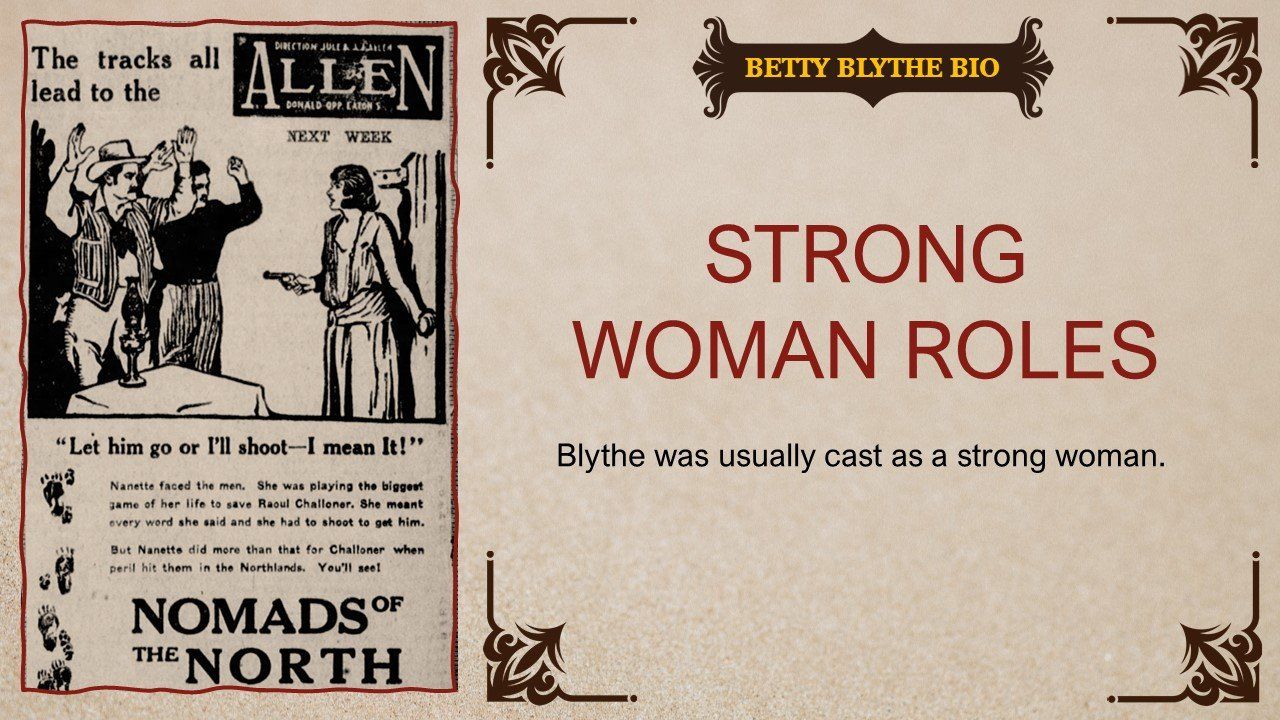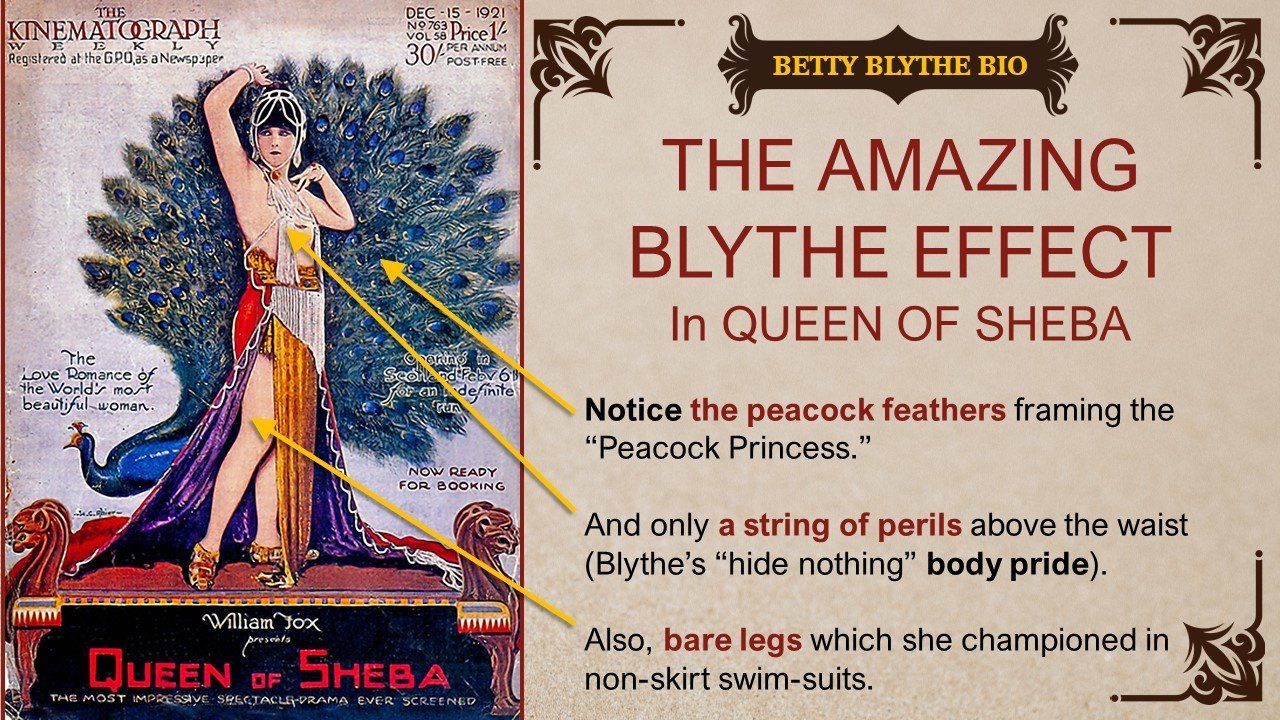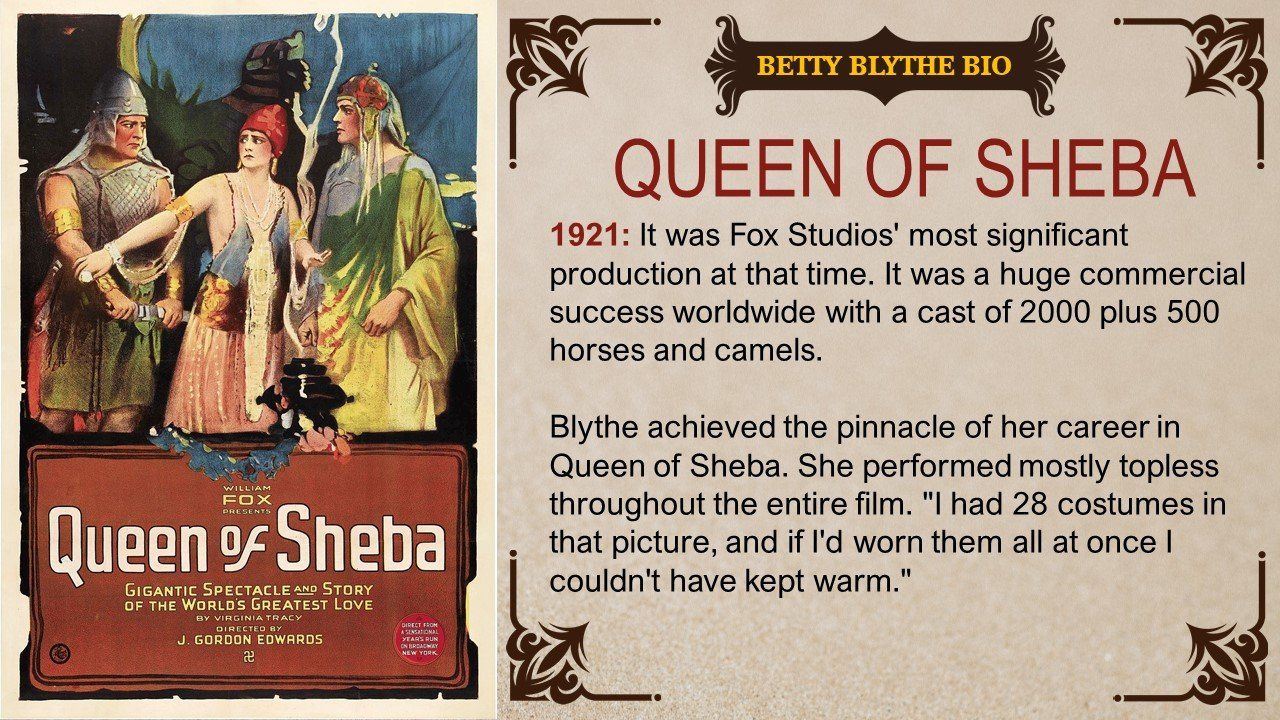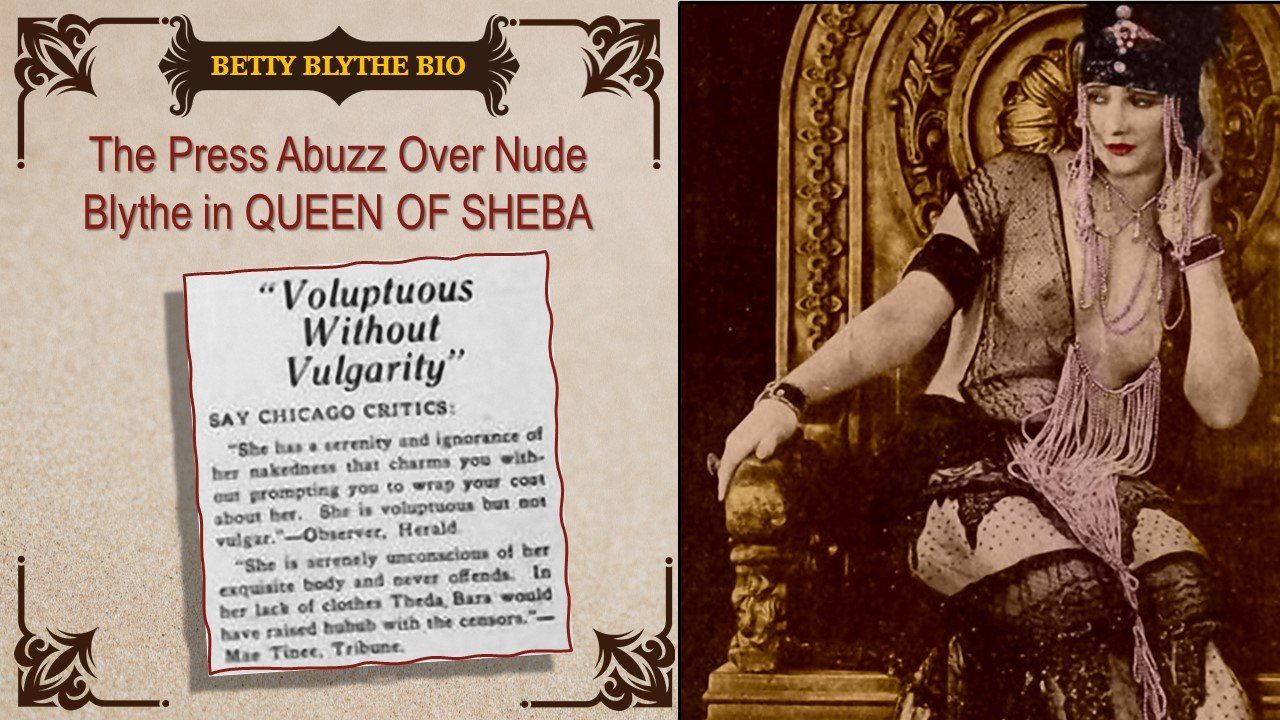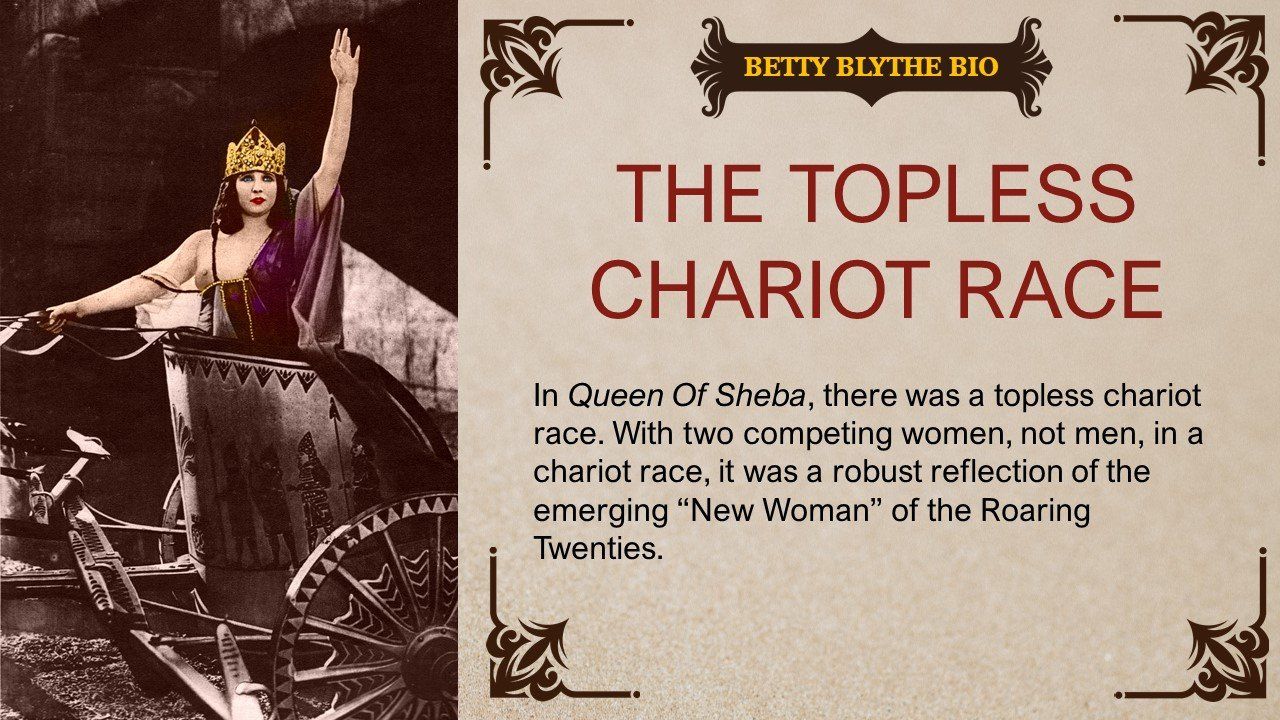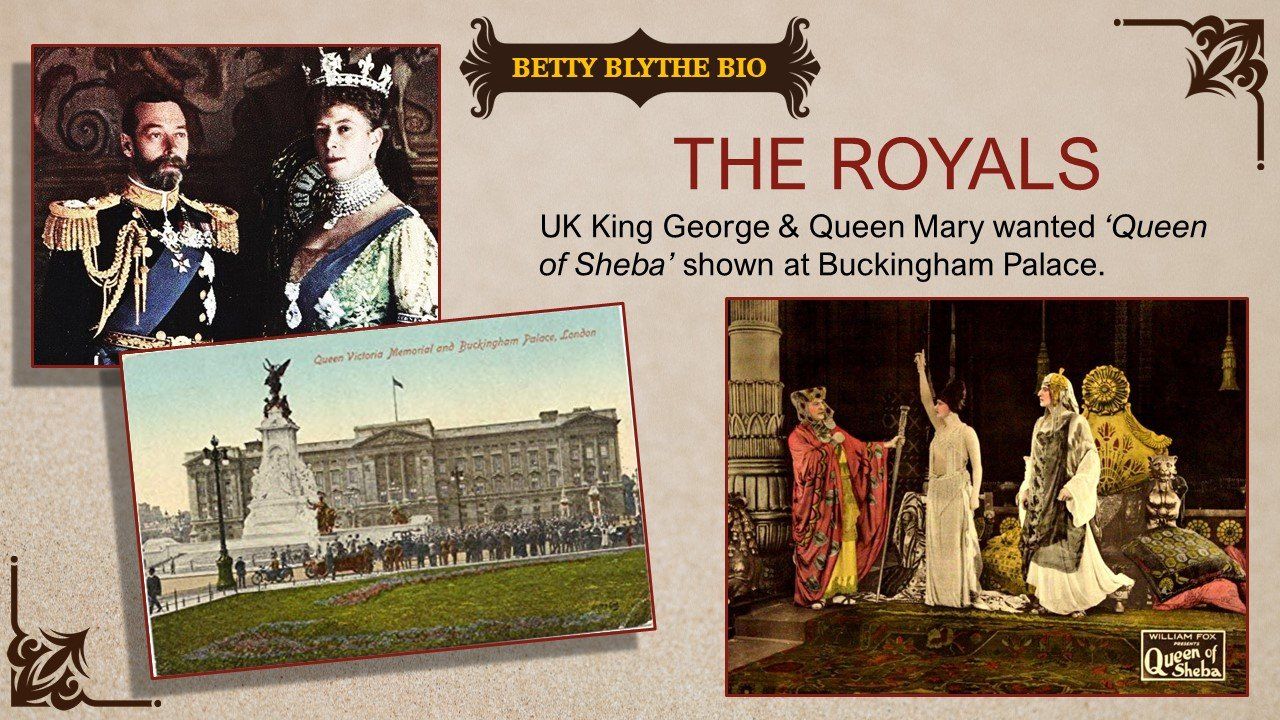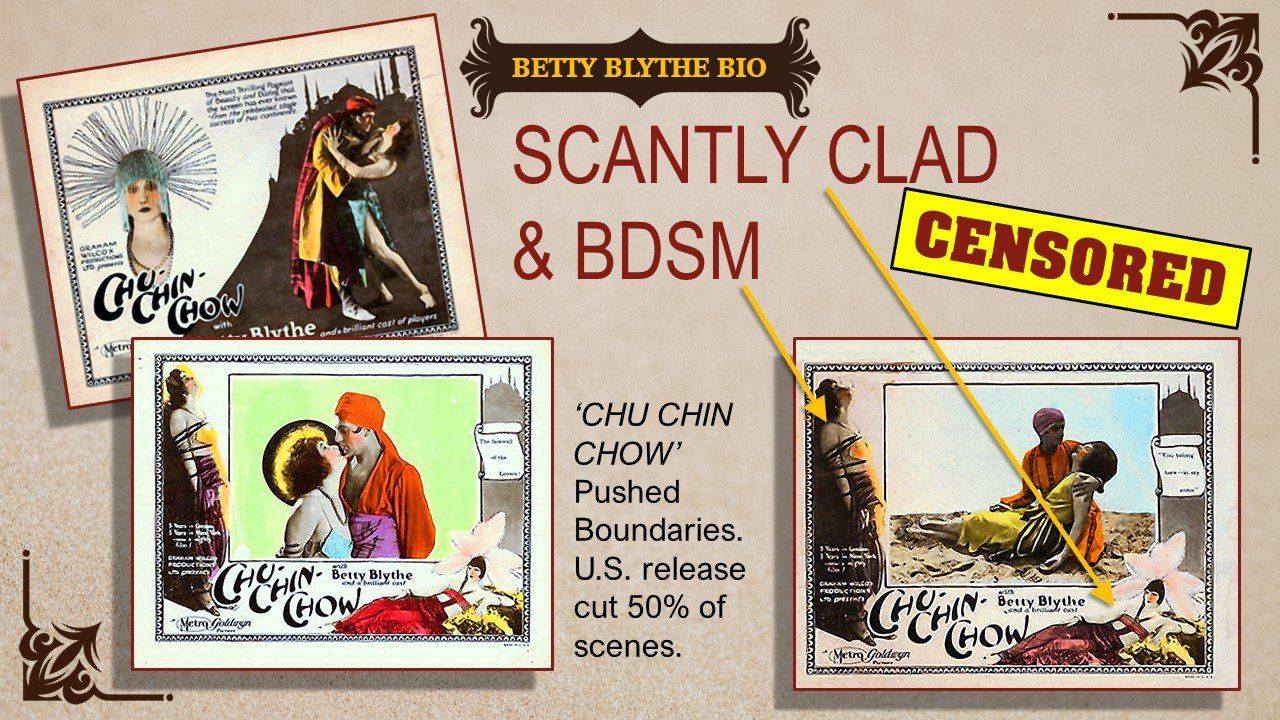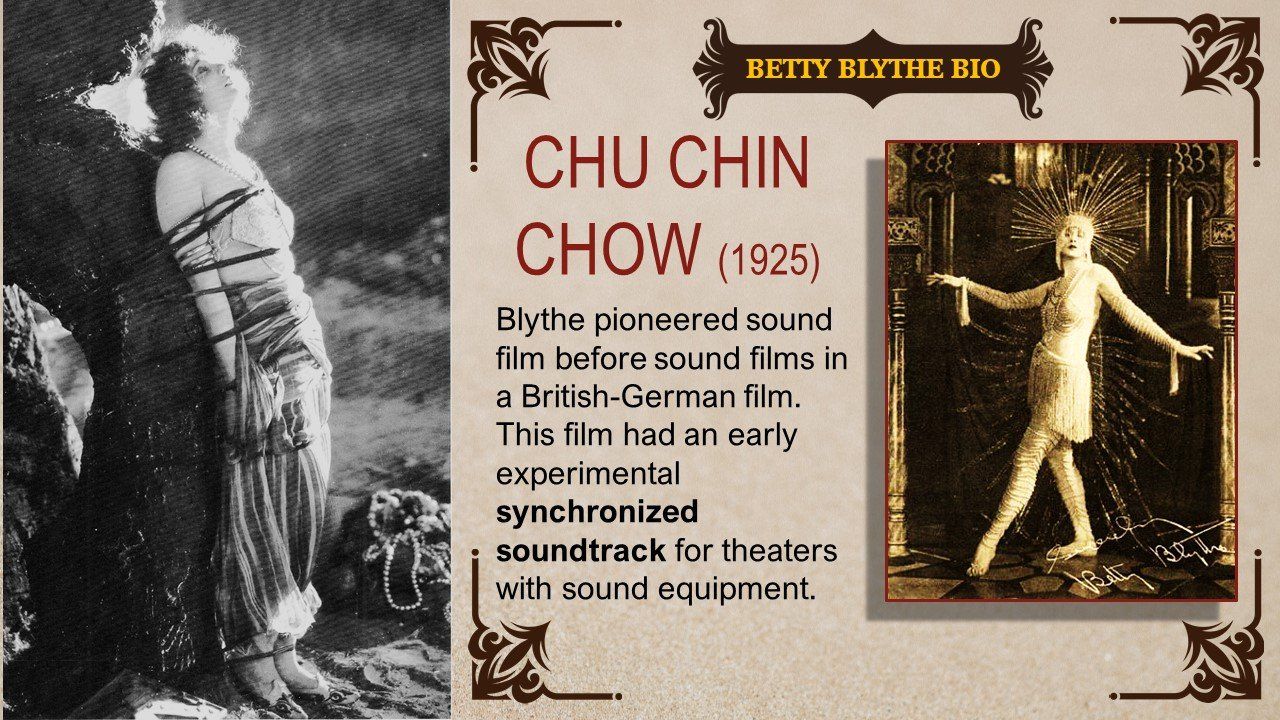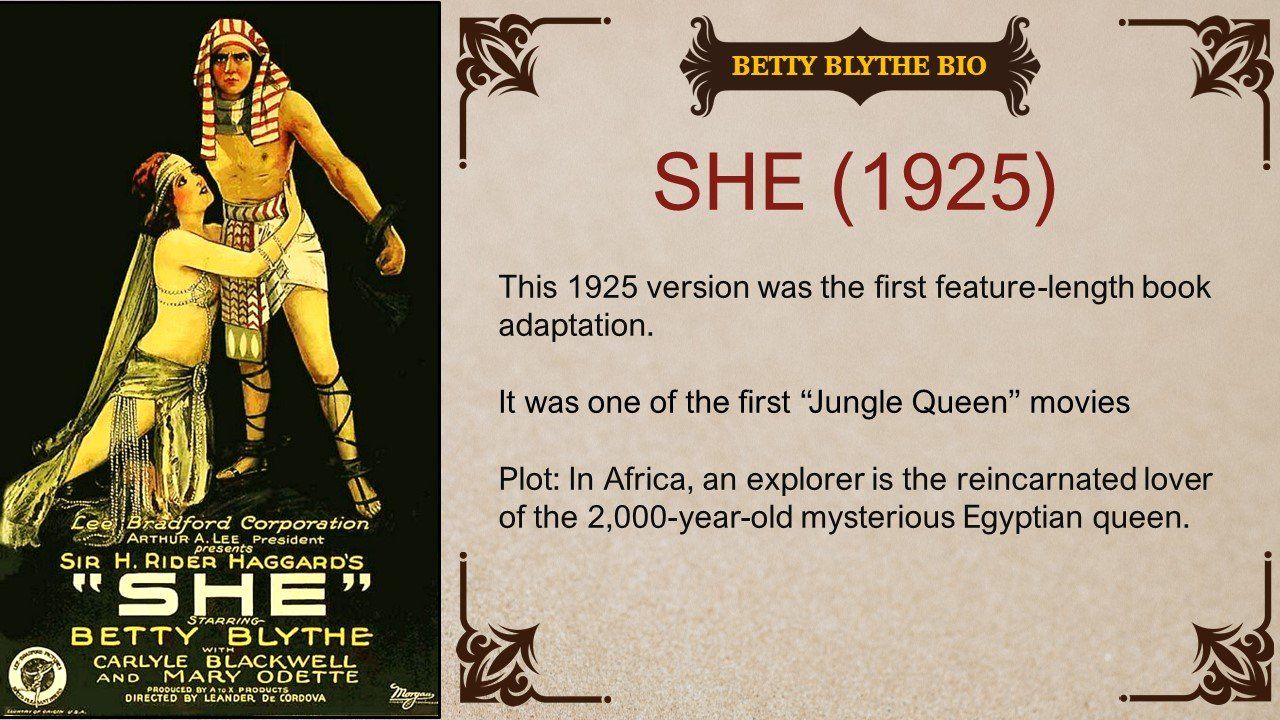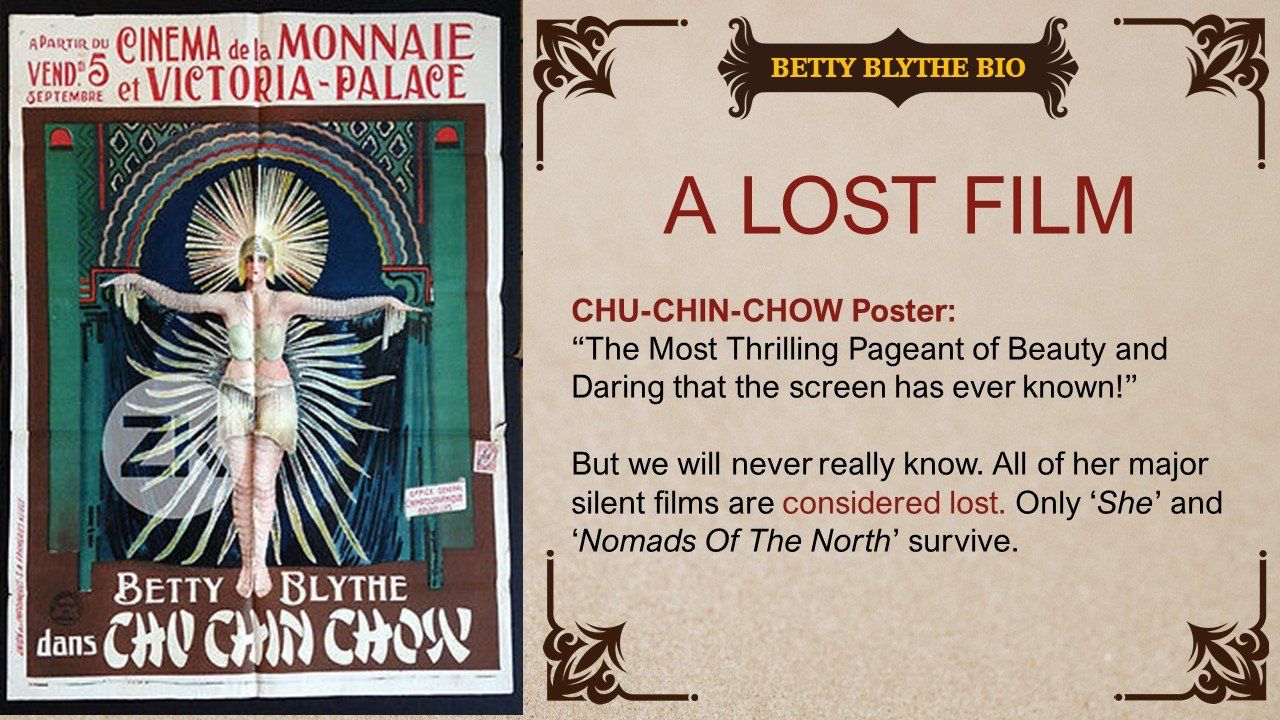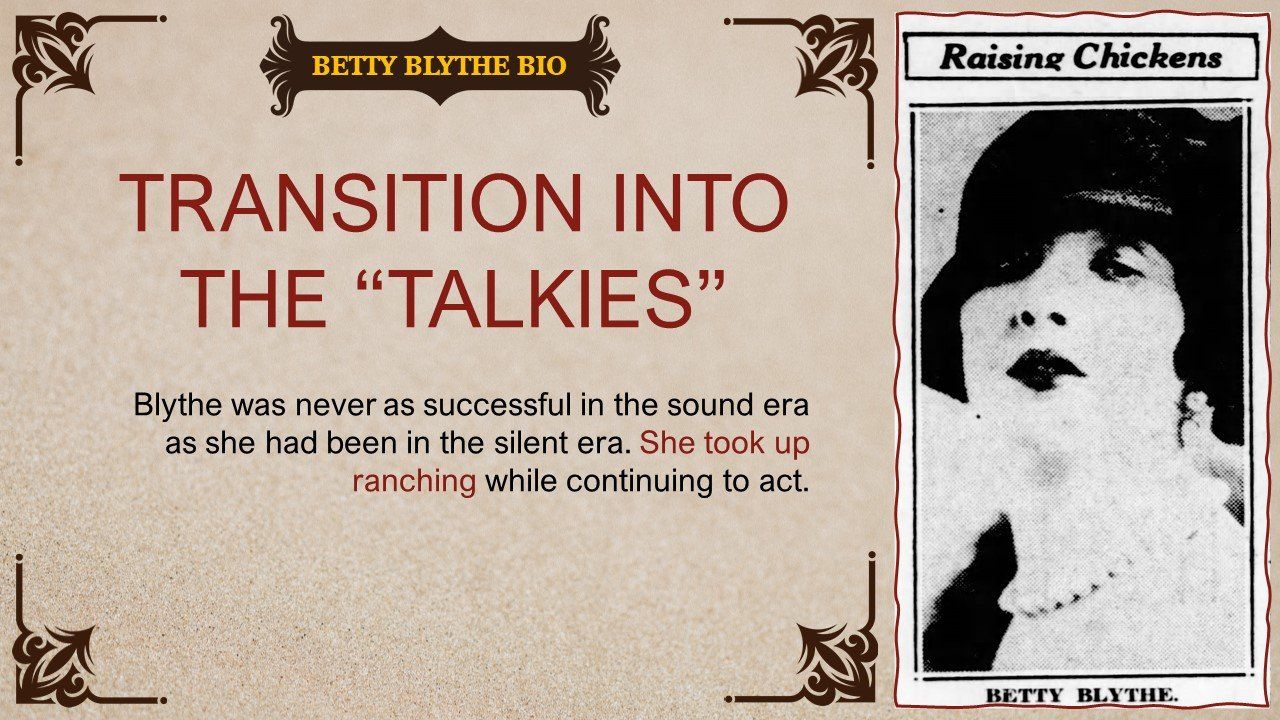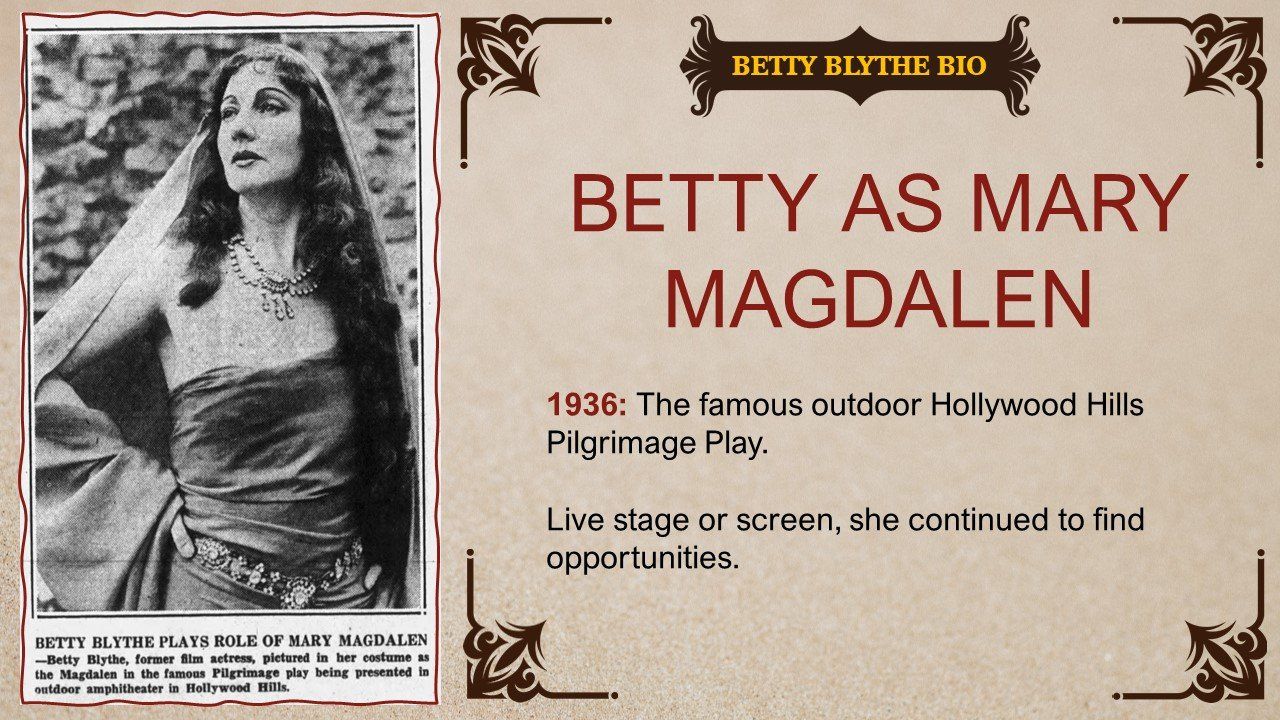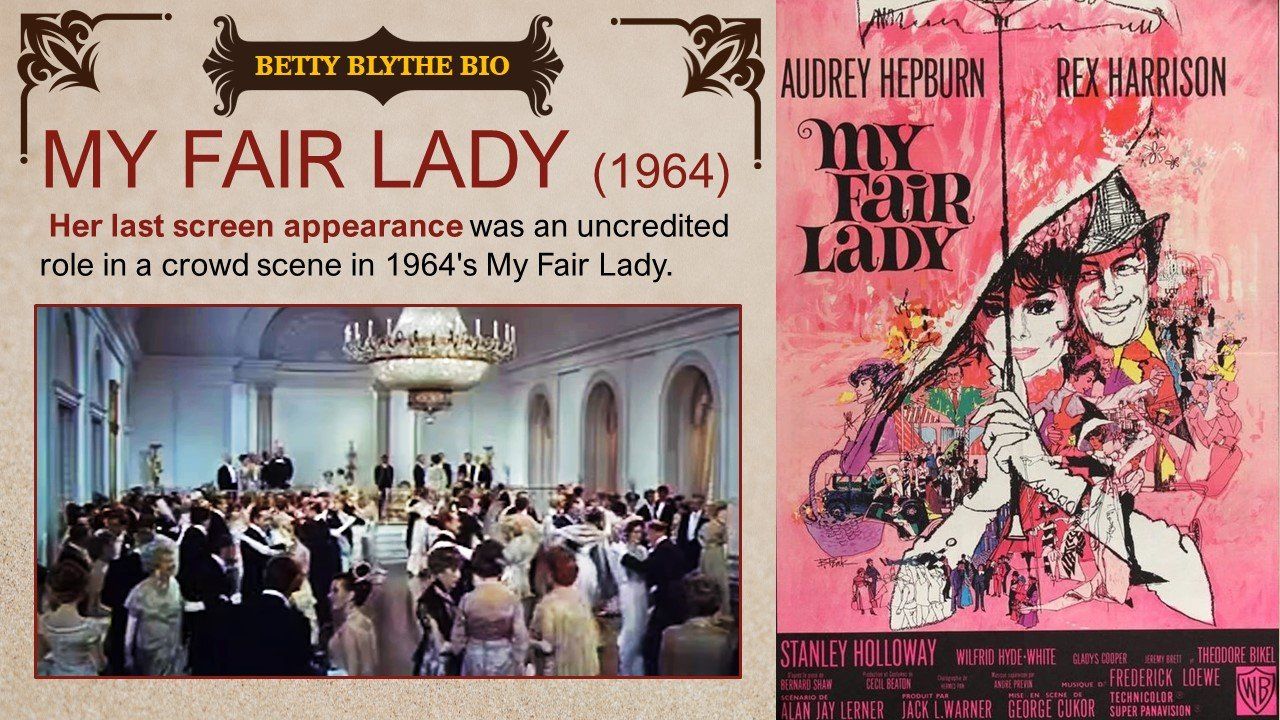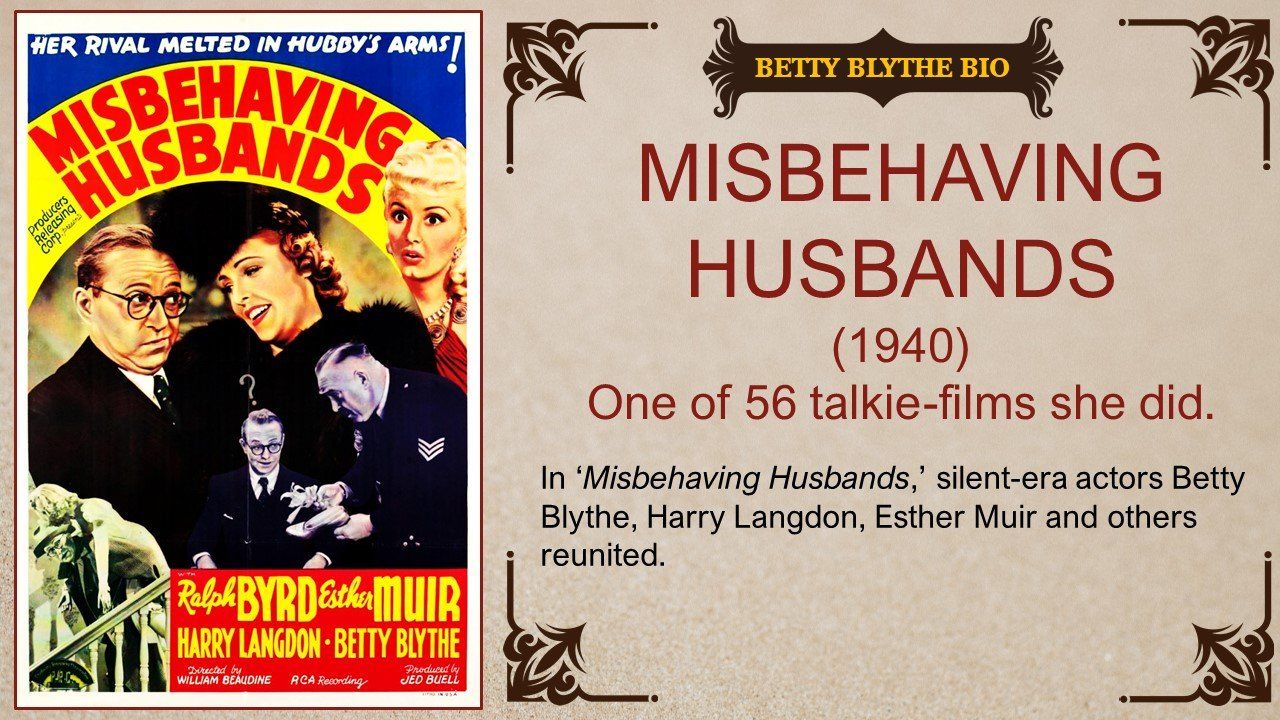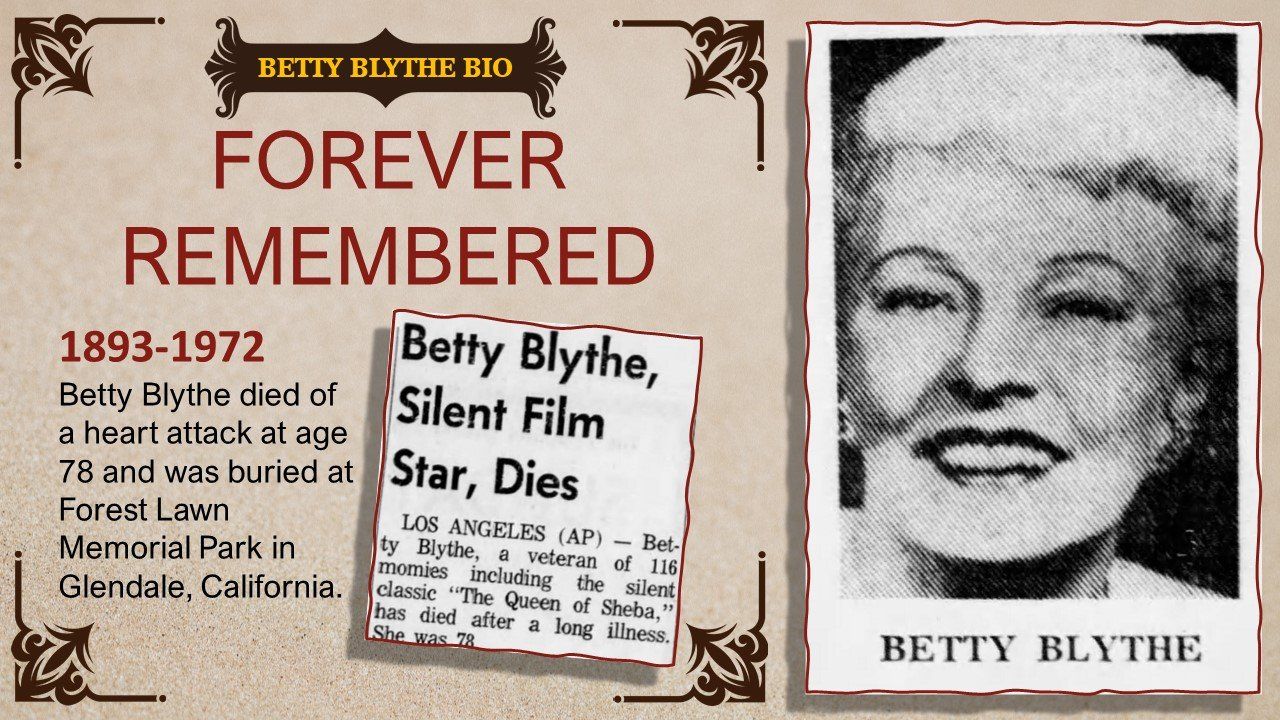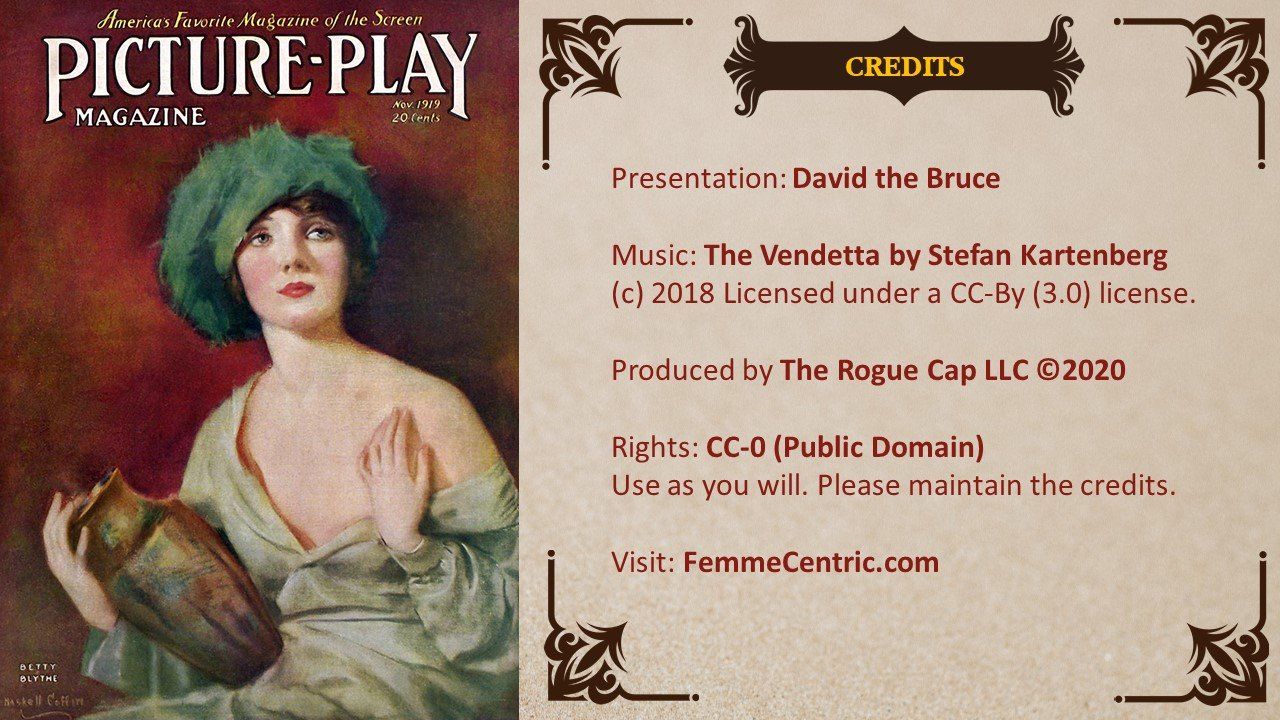Betty Blythe
David the Bruce • May 25, 2020
She Did What Few Others Would Do!
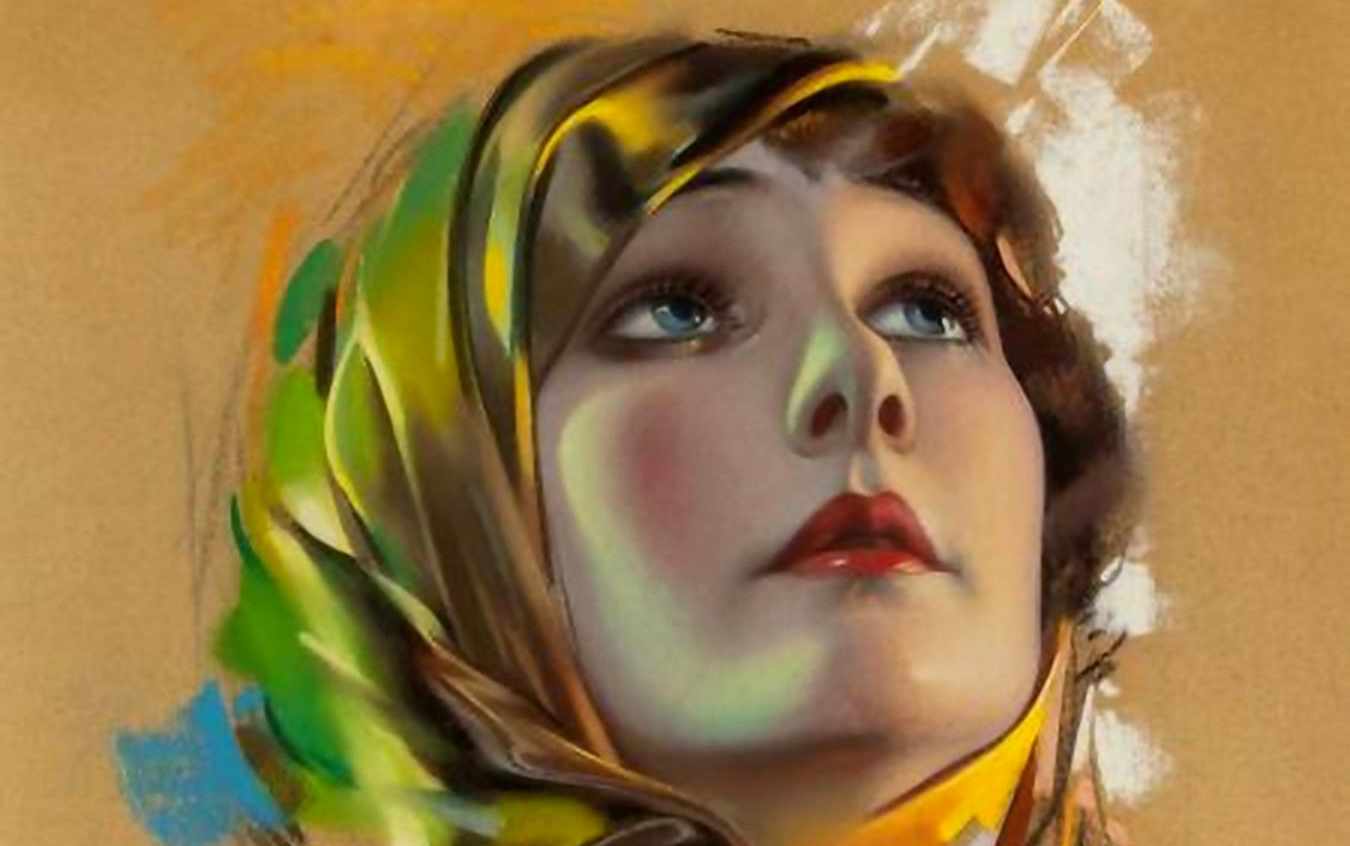
Here is the near forgotten mother of all super-power women in movies. She is the first Jungle Queen in a full length movie. Here is her eye opening bio.
BETTY BLYTHE. Strong. Independent. Courageous. Trendsetter. A model for us all!
Actress, Singer, and Entertainer. Born: Elizabeth Blythe Slaughter on September 1, 1893, in Los Angeles, CA. She is best known for her dramatic roles in exotic silent films such as The Queen of Sheba (1921)
She performed in 63 silent films and 56 talking pictures. She is renowned for being one of the first actresses to appear nude in a film. She said, "A director is the only man besides your husband who can tell you how much of your clothes to take off."
Her career began in Los Angeles in 1914 where she made her debut at the Los Angeles Pantages Theatre as a singer and dancer in vaudeville (variety stage shows) going on to be a huge Vaudeville star
Betty Blythe made news when she broke the silly superstition nonsense of wearing peacock feathers. No designer would help her, so she made her stage costume herself.
The feathers were said to represent the "evil eye" of the female demon Lilith, who is the harbinger of misfortune, illness, and death.
She campaigned for a better swimming suit. The skirted swimming suit was a real danger. Betty Blythe said, "Skirts be hanged" and introduces new un-skirted bathing suits. Making "it possible for women to have a chance to swim without a risk of being tangled…"
She becomes a movie sensation. Between 1916 and 1918, she made 16 films! Sadly, nearly all her silent films are considered "lost."
She was one of Hollywood's original "Vamps." Originally, "Vamps" were not blood-suckers. Instead, they were Femme Fatales who preyed on respectable but foolish men by draining them of their life force. Other Vamps include Theda Bara, Valeska Suratt, and Louise Glaum,
Blythe married movie director Paul Scardon. It lasted until his death in 1954! A great love story!
Betty Blythe embraced her 5'8" height and her 150 lbs. "Be proud," she stated. She never wore flat heel shoes. She hid nothing. She said that a woman's "distinctive assets" are part of her "individual charm."
In 1921 Fox Studios released its most significant production at that time, The Queen of Sheba." It was a huge commercial success worldwide with a cast of 2000 plus 500 horses and camels.
Blythe achieved the pinnacle of her career in Queen of Sheba. She performed mostly topless throughout the entire film. "I had 28 costumes in that picture, and if I'd worn them all at once, I couldn't have kept warm."
In 'Queen Of Sheba,' there was a topless chariot race. With two competing women, not men, in a chariot race, it was a robust reflection of the emerging "New Woman" of the Roaring Twenties.
Next, Blythe pioneered sound film before sound films in the British-German film 'Chu Chin Chow' (1925). This film had a new experimental synchronized soundtrack for theaters with sound equipment. But, it pushed boundaries with a scantily clad Blythe and BDSM scenes. The U.S. release cut 50% of the film.
Her film "She" (1925) was the first feature-length book adaptation, and it was one of the first "Jungle Queen" movies. Plot: In Africa, an explorer is the reincarnated lover of the 2,000-year-old mysterious Egyptian queen.
But it too was trimmed from its original 98-minute running time down to 69 minutes for U.S. release.
As an actress, Betty Blythe quickly went from $40 a month to a million dollars annually. She bought and sold a section of what is now the Sunset Strip and reportedly made $3.5 million in the transaction. But with the 1929 stock market crash, she lost $15 million in just one day!
Blythe was never as successful in the sound era as she had been in the silent era. She took up ranching while continuing to act.
Live stage or screen, she continued to find opportunities. In 1936 she played Mary Magdalen in the famous outdoor Hollywood Hills Pilgrimage Play.
Live stage or screen, she continued to find opportunities. In 1940 she was cast with other silent-era actors Harry Langdon, Esther Muir, and others in 'Misbehaving Husbands.' One of 56 talkie films she did.
Her last screen appearance was an uncredited role in a crowd scene in 1964's 'My Fair Lady' starring Audrey Hepburn.
Betty Blythe died of a heart attack at age 78 in 1972 and was buried at Forest Lawn Memorial Park in Glendale, California.
She once said, "I must have been good at being bad. My fall from stardom was destined. I know now that a woman can't go on playing villainous roles and be successful for long though it is different for men. But if a woman is bad, she is stamped."
BETTY BLYTHE. Strong. Independent. Courageous. Trendsetter. A model for us all!

